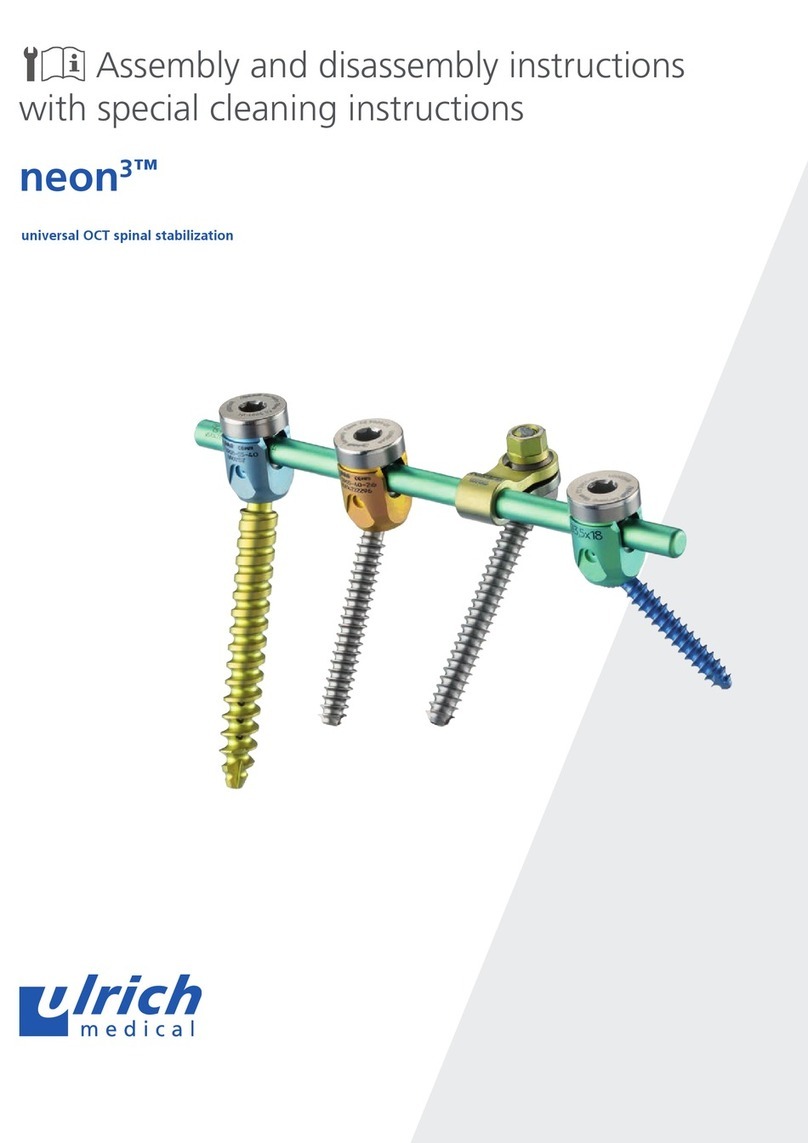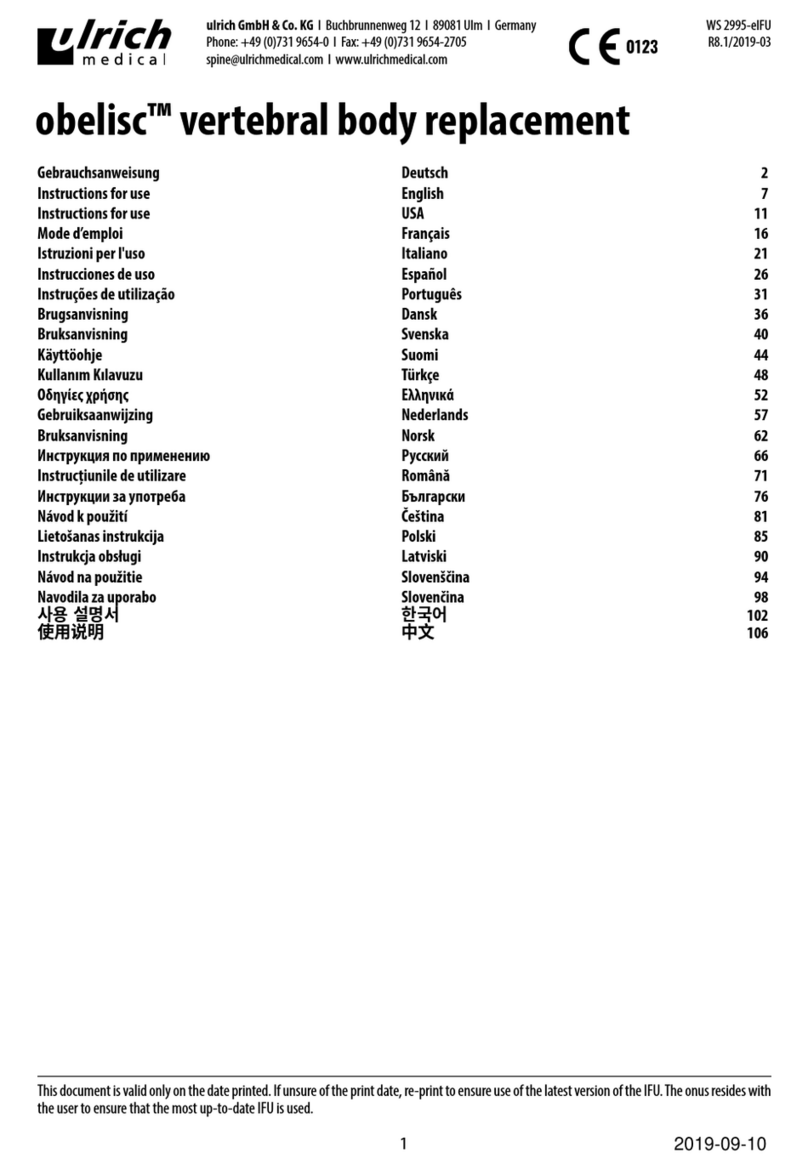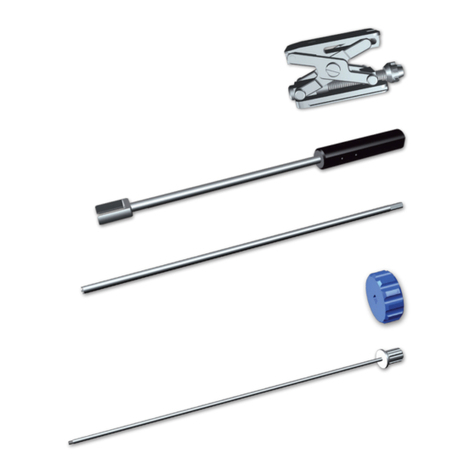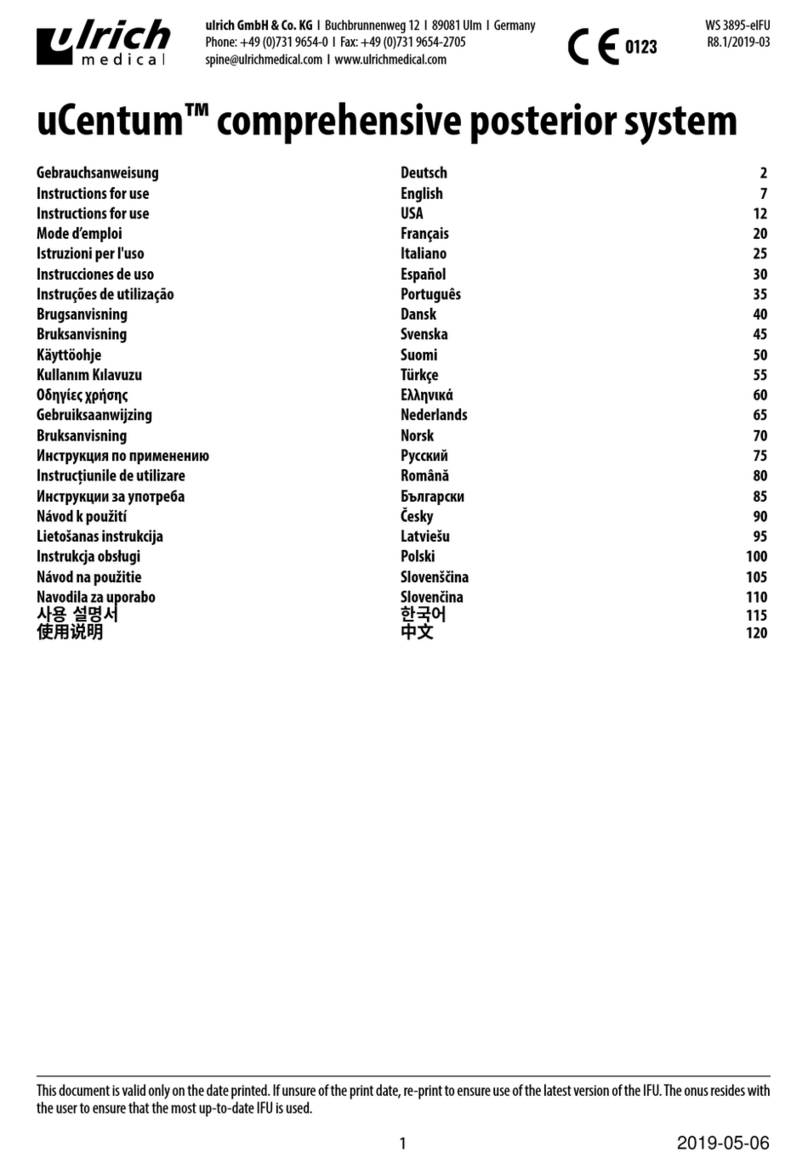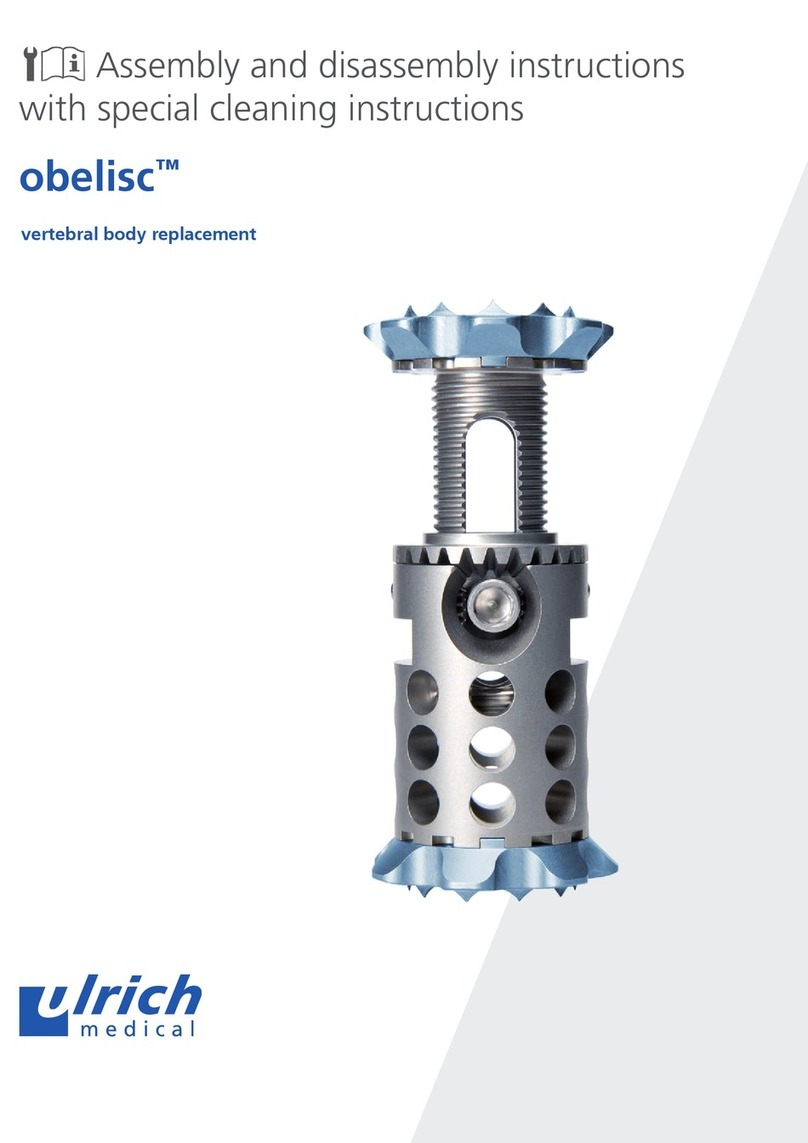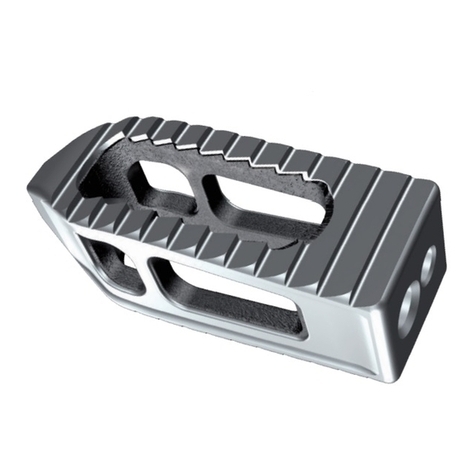
3
Thisdocument is valid onlyon the dateprinted.Ifunsureof the print date,re-print to ensure use of the latestversionof the IFU.Theonusresideswith
the user to ensure that the most up-to-date IFU is used.
Lokale oder systemische Reaktionen auf Grund einer Materialunverträglichkeit
Ausbleiben der knöchernen Fusion
Anschlussdegeneration von Nachbarsegmenten
Diese möglichen Komplikationen können weitere operative Eingrie (Implantatentfernung oder Erneuerung der Stabilisierung) zur Folge
haben. Sonstige Komplikationen, die durch das operative Verfahren an sich und unabhängig vom Implantat entstehen können, sind:
Allgemeine operationsbedingte Gefahren und Komplikationen
Narkoserisiken, Bluttransfusionsrisiken, Lagerungsschäden
Lungenkomplikationen
Infektion
Wundheilungsstörung
Kardiovaskuläre Komplikationen wie z. B. Blutverlust,Thrombose, Embolie, Gerinnungsstörung
Gastrointestinale Komplikationen wie z. B. Gastritis, Ileus, Ulcus
Neurologische Komplikationen wie z. B. Rückenmarks- oder Nervenwurzelläsionen mit vorübergehenden oder bleibenden sensorischen
und/oder motorischen Beeinträchtigungen (Blasen- und Mastdarmstörungen, Sexualfunktionsstörungen)
Intraoperative Verletzung von Gefäßen, Massenblutung, Hirnschlag, Hirnblutung mit potentiell lebensbedrohlichen Folgen
Verletzung von Nachbarorganen der Wirbelsäule wie Halseingeweide, Brust- und Bauchorgane je nach operierter Region
6 Warnhinweise und Vorsichtsmaßnahmen
6.1 Allgemein
Der Anwender muss sicherstellen, dass die aktuellenVersionen der als Gesamtdokumentation zum System bereitgestellten vollständigen
Produktmaterialien vorliegen und berücksichtigt werden. Diese sind zudem verfügbar unter: www.ifu.ulrichmedical.com. Auf Anfrage
kann ein gedrucktes Exemplar innerhalb von 7Tagen geliefert werden.
Dieses Produkt darf nur von einem in der Wirbelsäulenchirurgie erfahrenen Arzt unter sterilen Bedingungen in einem Operationssaal mit
Bildwandler verwendet werden.
Der behandelnde Arzt trägt die Verantwortung für die richtige Auswahl der Patienten, das erforderliche Training mit dem System und die
Erfahrung bei der Auswahl und Platzierung von Implantaten. Ihm obliegt auch die Entscheidung, Implantate postoperativ zu belassen
oder wieder zu entfernen.
Das Produkt muss sorgfältig gehandhabt und gelagert werden. Implantate, die Beschädigungen oder Kratzer aufweisen, dürfen nicht
verwendet werden, da die Festigkeit und Ermüdungsresistenz beeinträchtigt sein können.
Implantate der entsprechenden ulrich medical Systeme sind ausschließlich mit den dafür vorgesehenen systemspezischen Instrumenten
zu verwenden, sofern nicht anderweitig angegeben.
Die Verbindung von ulrich medical Implantaten mit Implantatkomponenten anderer Hersteller ist nicht zulässig. Eine Kombination mit
anderen Implantaten von ulrich medical ist nicht zulässig.
Korrosion von Metallimplantaten ist aufgrund vorhandener Passivschichten sehr gering, kann jedoch zur beschleunigten
Materialermüdung mit der Möglichkeit eines Materialbruches sowie zur Zunahme der in den Körper abgegebenen Metallbestandteile
führen. Korrosion wird begünstigt durch die Berührung von Komponenten aus unterschiedlichen Metallen sowie durch eine Beschädigung
der Implantatoberäche. Ein direkter Kontakt mit Metallimplantaten anderer Hersteller ist nicht zulässig.
6.2 Präoperativ
Eine Implantation ist erst dann in Betracht zu ziehen, wenn alle anderen Behandlungsmöglichkeiten sorgfältig abgewogen und nicht
als besser erkannt worden sind. Selbst ein erfolgreich implantiertes Implantat ist dem oder den gesunden Bewegungselement(en)
der Wirbelsäule unterlegen. Umgekehrt kann ein Implantat für den Patienten ein vorteilhafter Ersatz für ein oder mehrere schwer
veränderte(s), degenerierte(s) Bewegungselement(e) sein, weil damit Schmerzen beseitigt und eine guteTragfähigkeit erreicht werden
kann.
Der Anwender muss beim Einsatz in einer nicht ausgewachsenen Wirbelsäule sorgfältig den Nutzen gegenüber dem Risiko abwägen.
Der Patient ist über die Risiken des Eingris und des Implantateinsatzes, einschließlich gegebenenfalls notwendiger Revisionen,
eingehend aufzuklären.
Der behandelnde Arzt sollte das mit der Verwendung dieses Implantats zu erwartende Operationsresultat, insbesondere hinsichtlich
möglicher physikalischer Limitationen des Implantats, mit dem Patienten ausführlich besprechen. Der postoperative Aktivitätsgrad
beeinusst die Lebensdauer des Implantats und die Haltbarkeit des Implantats im Knochen. Der Patient muss daher auf Einschränkungen
und Gefahren bei täglichen Aktivitäten und auf besondere Verhaltensregeln hingewiesen werden. Rauchen kann fusionshemmend
wirken und Promotor für eine erhöhte Rate von Pseudarthrose sein. Patienten sollten über die möglichen negativen Auswirkungen
des Rauchens auf den Behandlungserfolg einer Fusionsoperation aufgeklärt werden. Der behandelnde Arzt muss abschätzen, ob der
Patient die Anordnungen verstehen und befolgen kann. Besondere Aufmerksamkeit sollte auf eine postoperative Besprechung und die
Notwendigkeit regelmäßiger medizinischer Kontrollen gelegt werden.
